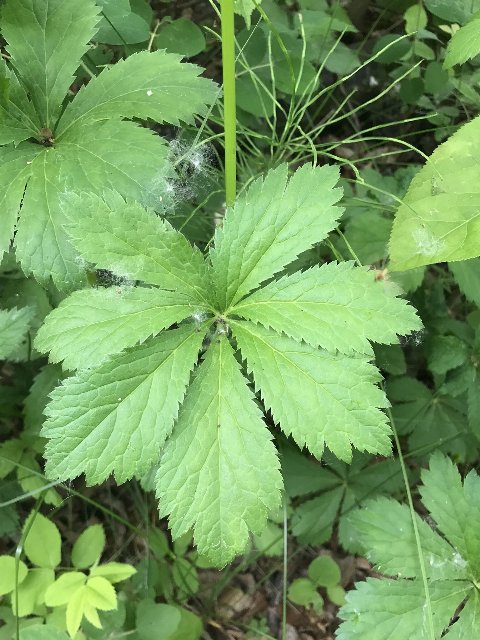Maryland Sanicle (Sanicula marilandica) vs. Clustered Blacksnakeroot (Sanicula odorata)
Updated May 31st, 2022These species have a large area of range overlap and are easily confused because both usually have 5 leaflets, and both have relatively showier, globe-shaped inflorescences with more numerous staminate flowers on longer pedicels, making them look similar to each other and less similar to the other two common Sanicula in the east. They can usually be distinguished the shape of the two leaflets close to the base of each leaf on basal leaves, and also by flower color and whether seeds are sessile. S. odorata ranges into sunnier, more disturbed habitats, is more likely to occur in large colonies, and ranges farther west in the southern states, whereas S. marilandica has a greater preference for slopes and high pH soils, and ranges farther north, and farther west in the north of its range.





